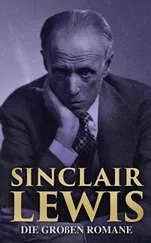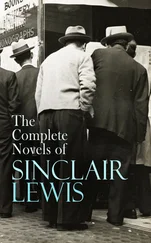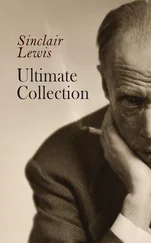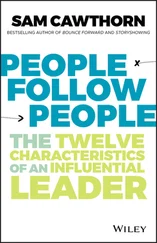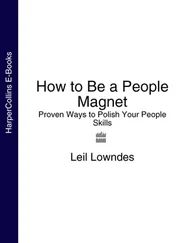Iain Sinclair - Millennium People
Здесь есть возможность читать онлайн «Iain Sinclair - Millennium People» — ознакомительный отрывок электронной книги совершенно бесплатно, а после прочтения отрывка купить полную версию. В некоторых случаях можно слушать аудио, скачать через торрент в формате fb2 и присутствует краткое содержание. Жанр: unrecognised, на английском языке. Описание произведения, (предисловие) а так же отзывы посетителей доступны на портале библиотеки ЛибКат.
- Название:Millennium People
- Автор:
- Жанр:
- Год:неизвестен
- ISBN:нет данных
- Рейтинг книги:3 / 5. Голосов: 1
-
Избранное:Добавить в избранное
- Отзывы:
-
Ваша оценка:
- 60
- 1
- 2
- 3
- 4
- 5
Millennium People: краткое содержание, описание и аннотация
Предлагаем к чтению аннотацию, описание, краткое содержание или предисловие (зависит от того, что написал сам автор книги «Millennium People»). Если вы не нашли необходимую информацию о книге — напишите в комментариях, мы постараемся отыскать её.
Millennium People — читать онлайн ознакомительный отрывок
Ниже представлен текст книги, разбитый по страницам. Система сохранения места последней прочитанной страницы, позволяет с удобством читать онлайн бесплатно книгу «Millennium People», без необходимости каждый раз заново искать на чём Вы остановились. Поставьте закладку, и сможете в любой момент перейти на страницу, на которой закончили чтение.
Интервал:
Закладка:
‘Call him.’
I walked across the room, turning my back to the television screen. Holding the mobile, I drummed my fingers on the mantelpiece, and tried to smile at the photograph of Sally sitting in her wheelchair between her parents, taken at St Mary’s Hospital on the day of our engagement. Standing behind her in my white lab coat, I seemed remarkably confident, as if I knew for the first time in my life that I was going to be happy.
The mobile rang before I could dial the Institute’s number. Through the hubbub of background noise, the wailing of ambulance sirens and the shouts of emergency personnel, I heard Henry Kendall’s raised voice.
He was calling from Ashford Hospital, close to Heathrow. Laura had been caught by the bomb blast in Terminal 2. Among the first to be evacuated, she had collapsed in Emergency, and now lay in the intensive-care unit. Henry managed to control himself, but his voice burst into a torrent of confused anger, and he admitted that he had asked Laura to take a later flight from Zurich so that he could keep an Institute appointment and meet her at the airport.
‘The Publications Committee…Arnold asked me to chair it. For God’s sake, he was refereeing his own bloody paper! If I’d refused, Laura would still be…’
‘Henry, we’ve all done it. You can’t blame yourself…’ I tried to reassure him, thinking of the stream of blood from Laura’s mouth. For some reason, I felt closely involved in the crime, as if I had placed the bomb on the carousel.
The dialling tone sounded against my ear, a fading signal from another world. For a few minutes all the lines to reality had been severed. I looked at myself in the mirror, puzzled by the travel clothes I was wearing, the lightweight jacket and sports shirt, the tactless costume of a beach tourist who had strayed into a funeral. There was already a shadow on my cheeks, as if the shock of the Heathrow bomb had forced my beard to grow. My face looked harassed and shifty in a peculiarly English way, the wary glower of a deviant master at a minor prep school.
‘David…’ Sally stood up, the sticks forgotten. Her face seemed smaller and more pointed, mouth pursed above a childlike chin. She took the mobile from me and gripped my hands. ‘You’re all right. Bad luck for Laura.’
‘I know.’ I embraced her, thinking of the bomb. If the terrorist had chosen Terminal 3, an hour or two later, Sally and I might have been lying together in intensive care. ‘God knows why, but I feel responsible.’
‘Of course you do. She was important to you.’ She stared at me, calmly nodding to herself, almost convinced that she had caught me in a minor but telling gaffe. ‘David, you must go.’
‘Where? The Institute?’
‘Ashford Hospital. Take my car. You’ll get through faster.’
‘Why? Henry will be with her. Laura isn’t part of my life. Sally…?’
‘Not for her sake. For yours.’ Sally turned her back to me. ‘You don’t love her, I know that. But you still hate her. That’s why you have to go.’
3 Why Me?
WE REACHED ASHFORD HOSPITAL an hour later, a short journey into a very distant past. Sally drove with verve and flourish, her right hand gripping the accelerator control mounted beside the steering wheel, working the throttle like a fighter pilot, left hand releasing the brake lever next to the gate of the automatic transmission. I had designed the controls, helped by an ergonomics specialist at the Institute, who had taken Sally’s measurements with the painstaking care of a Savile Row tailor. By now she had recovered all the strength in her legs, and I suggested that we ask the Saab garage to reconvert the car. But Sally liked the adapted controls, the special skills unique to herself. When I gave in, she teased me that I secretly enjoyed the perverse thrill of having a handicapped wife.
Whatever my motives, I watched her with husbandly pride. She steered the Saab through the dense midday traffic, flashing the headlights at the overworked police on the motorway, fiercely tapping the handicapped driver’s sticker on the windscreen. Seeing the wheelchair on the rear seat, they waved us onto the hard shoulder, a high-speed alley that only a glamorous woman could make her own.
As we sped along, hazard lights flashing, I almost believed that Sally was eager to meet her one-time rival, now lying in the intensive-care unit. In a sense, a kind of justice had been done. Sally had always seen her accident as a random event, a cruel deficit in the moral order of existence that placed it firmly in her debt.
Sightseeing with her mother in the Bairro Alto district of Lisbon, a maze of steeply climbing streets, Sally had crossed the road behind a stationary tram. The fleet of ancient vehicles with their wooden panelling and cast-iron frames had been installed by British engineers almost a century earlier. But charm and industrial archaeology both came at a price. The tram’s brakes failed for a few seconds, and it rolled backwards before the safety clutch locked the wheels, knocking Sally to the ground and trapping her legs under the massive chassis.
I met Sally in the orthopaedic wing at St Mary’s, at first sight a plucky young woman determined to get well but inexplicably not responding to treatment. The months of physiotherapy had produced a grumpy temper, and even a few foul-mouthed tantrums. I overheard one of these tirades, an ugly storm in a private suite, and put her down as the spoilt daughter of a Birmingham industrialist who flew to see her in the company helicopter and indulged every whim
I visited St Mary’s once a week, supervising a new diagnostic system developed in collaboration with the Adler. Instead of facing a tired consultant eager for a large gin and a hot bath, the patient sat at a screen, pressing buttons in reply to prerecorded questions from a fresh-faced and smiling doctor, played by a sympathetic actor. To the consultants’ surprise, and relief, the patients preferred the computerized image to a real physician. Desperate to get Sally onto her feet, and well aware that her handicaps were ‘elective’, in the tactful jargon, her surgeon suggested that we sit Sally in front of the prototype machine.
I distrusted the project, which treated patients like children in a video arcade, but it brought Sally and me together. I rewrote the dialogue of a peptic ulcer programme, adapting the questions to Sally’s case, put on a white coat in front of the camera and played the caring doctor.
Sally happily pressed the response buttons, revealing all her anger over the injustice of her accident. But a few days later she swerved past me in the corridor, almost running me down. Pausing to apologize, she was amazed to find that I existed. Over the next days her good humour returned, and she enjoyed mimicking my wooden acting. As I sat on her bed she teased me that I was not completely real. We talked to each other in our recorded voices, a courtship of imbeciles that I was careful not to take seriously.
But a deeper, unspoken dialogue drew us together. I called in every day, and the nursing staff told me that when I was late Sally climbed from her bed and searched for me, dispensing with her wheelchair. As I soon learned, she was a more subtle psychologist than I was. Gripping her volume of Frida Kahlo paintings, she asked me if I could track down the make of tram that had injured Kahlo in Mexico City. Was the manufacturer by any chance an English firm?
I could grasp the anger that linked the two women, but Kahlo had been grievously wounded by a steel rail that pierced her uterus and gave her a lifetime of pain. Sally had crossed a foreign street without looking to left or right, and lost nothing of her beauty. It was her curious obsession with the random nature of the accident that prevented her from walking. Unable to resolve the conundrum, she insisted that she was a cripple in a wheelchair, sharing her plight with other victims of meaningless accidents.
Читать дальшеИнтервал:
Закладка:
Похожие книги на «Millennium People»
Представляем Вашему вниманию похожие книги на «Millennium People» списком для выбора. Мы отобрали схожую по названию и смыслу литературу в надежде предоставить читателям больше вариантов отыскать новые, интересные, ещё непрочитанные произведения.
Обсуждение, отзывы о книге «Millennium People» и просто собственные мнения читателей. Оставьте ваши комментарии, напишите, что Вы думаете о произведении, его смысле или главных героях. Укажите что конкретно понравилось, а что нет, и почему Вы так считаете.





